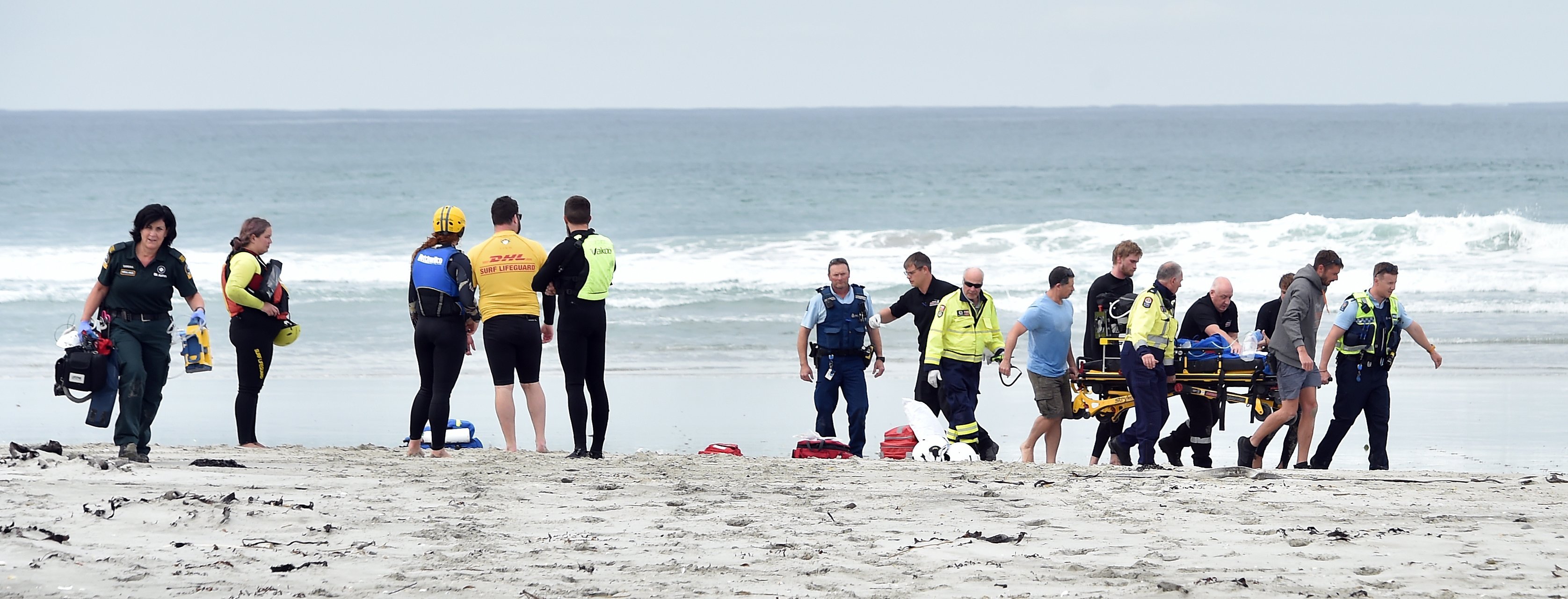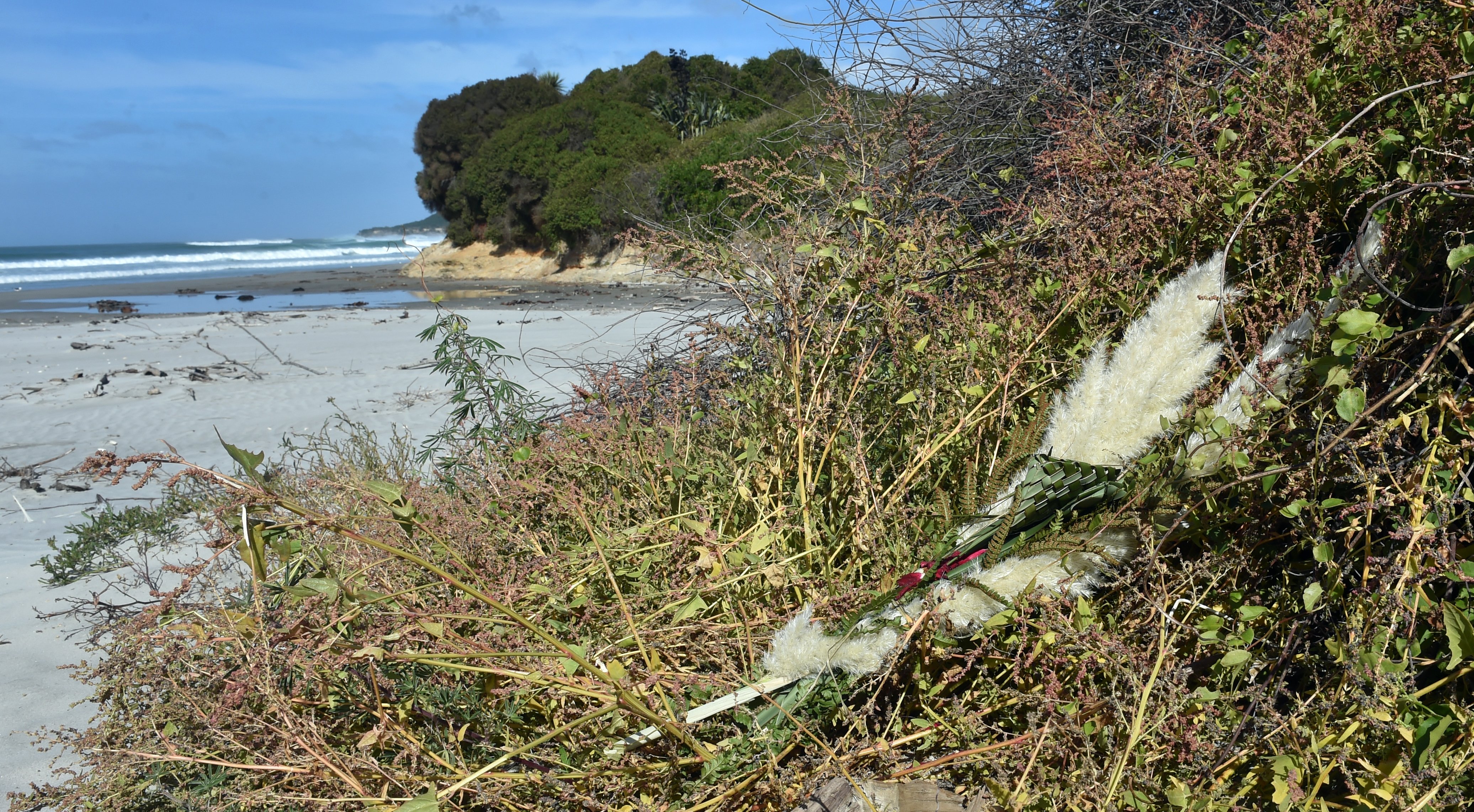Warning: Some people may find details in this story upsetting.

On April 3, 2021, four surfers at the scene were credited with saving the lives of her other four family members.
The girl, who has permanent name suppression, died in Dunedin Hospital after over two hours of CPR which began once she was rescued from the capsized boat.
When the father was interviewed, he said they were travelling towards the sandbar at a slow speed so he could find a channel through the bar, which he could not find.
He then turned the boat to face the waves, but a larger wave struck and the boat capsized.
All the family were wearing lifejackets.
The girl's brother and mother landed away from the boat, and the father, the girl's sister and the girl who drowned were all trapped, at least partially, beneath the boat.
The father took his lifejacket off to dive under the boat and take the toddler’s lifejacket off so he could help her make an escape with him; however, he lost consciousness, and was pulled from under the boat after his wife saw his legs floating from underneath.
The rescue began when four surfers, three of whom were qualified doctors and the fourth a doctor in training, arrived at Taieri Mouth about the same time when the family's boat capsized.
The surfers noticed heads bobbing near the wreckage and jumped into action.
The girl's brother was spotted first in the water by Evie Hall, she helped him back to shore where he told her there were more people still in the water.
Using their boards, surfers Michaela Jones and William Allen paddled out and spotted the parents and the girl's sister.
They pulled the father and mother on to a surfboard each and told them to kick as hard as they could back to the shore.
The sister’s head was knocking against the boat and being covered with water, so Mr Allen untangled her lifejacket and pulled her free, placing her on the board.
After getting her on the surfboard, Ms Jones began mouth-to-mouth resuscitation.

Surfer James Welchman noted someone was still missing, and paddled back out with Ms Hall.
He dived under the capsized boat numerous times but could not locate the girl; however, when he reached deep into the bow, he felt a small foot and pulled hard bringing the girl up to the surface.
After placing the girl on the board, Mr Welchman and Ms Hall began CPR in the water and took her back to shore.
She was flown by helicopter to Dunedin Hospital with Ms Allen accompanying her while ventilating her on the flight.
When she arrived at hospital, she had already been submerged in the water for 15 minutes or more, and was described as being pale, cold to touch and lifeless.
Doctors contacted Starship Hospital in Auckland for advice regarding the potential for extracorporeal membrane oxygenation (ECMO) for rewarming and cardiopulmonary support, but were advised she would not be a candidate for ECMO as her prognosis was poor, unlikely survivable and CPR could be ended after an hour of CPR at the hospital.

Her cause of death was ruled as cardiopulmonary arrest secondary to drowning by the Dunedin emergency department, which was upheld by the coroner.
Following the event, a technical expert from Maritime New Zealand inspected the boat and said the boat’s engine had enough horsepower and the vessel was in good condition at the time of the capsizing.
Coroner Ruth Thomas accepted that the boat was fit for purpose prior to the capsize, and also accepted crossing river or harbour bars in New Zealand could be dangerous, with Taieri Mouth having a history of vessel capsizes.
The coroner said the father found himself "as the skipper of his boat in sea conditions that exceeded his experience in the challenging Taieri bar crossing environment".
There were signs warning of the dangerous conditions at the mouth, but the father had not seen or read them.
Thomas recommended the Otago Regional Council improve the prominence and visual impact of the warning signs. However, the council has said all skippers are responsible for educating themselves on boating safety at each location, and any warning signage is a last opportunity to provide information.
It said the signs highlighted the key safety messages, and the placement was satisfactory.
Thomas noted the four surfers were to be commended for their bravery and rescue skills, and that their actions saved lives.
The coroner offered their condolences to the family and friends over the tragic loss of the young girl.
laine.priestley@odt.co.nz, Additional reporting RNZ












